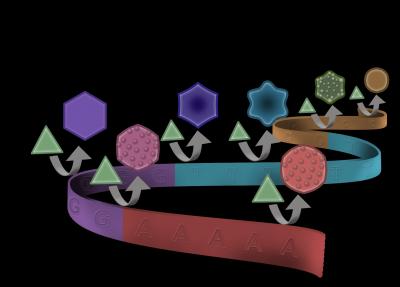Researchers at the University of Illinois have found that the scope of DNA code is not restricted to shaping biological molecules and genetic traits. In experiments conducted by the researchers, the DNA code was found to steer gold nanoparticles to grow into specific shapes.
 DNA shaping gold nanoparticles (Credit: Zidong Wang and Yi Lu)
DNA shaping gold nanoparticles (Credit: Zidong Wang and Yi Lu)
Gold nanoparticles are very small crystals of gold with numerous applications in fields such as medicine, catalysis and electronics by virtue of their exceptional physicochemical properties. Since these desired properties of gold nanoparticles are evolved on the basis of their size and shape, it is imperative to customize the nanoparticle properties to suit the intended application.
The team of researchers wanted to determine if DNA sequences can be applied to direct the synthesis of nanoparticles in a manner similar to their shaping of protein synthesis. Gold nanoparticles are synthesized from gold seeds in a gold salt solution.
For their experiment, the researchers incubated small DNA segments with the gold seeds before the addition of the gold salt solution. The four letters constituting the DNA alphabet are A, C, G and T. These letters are known as bases and their sequence determines the genetic code. The binding of the DNA segment with the gold nanoseeds is different for each base and combination which subsequently leads to different shapes of gold nanoparticle. The experiments demonstrated that repetitive A’s produced round and rough gold nanoparticles while C’s yielded flat discs. G’s yielded hexagonal shaped gold nanoparticles while T’s produced star shaped nanoparticles. Combination of bases yielded intermediate shapes. The team is attempting to determine the exact way in which DNA influence growth of nanoparticles and also plan to extend this method to the synthesis of other nanoparticles.